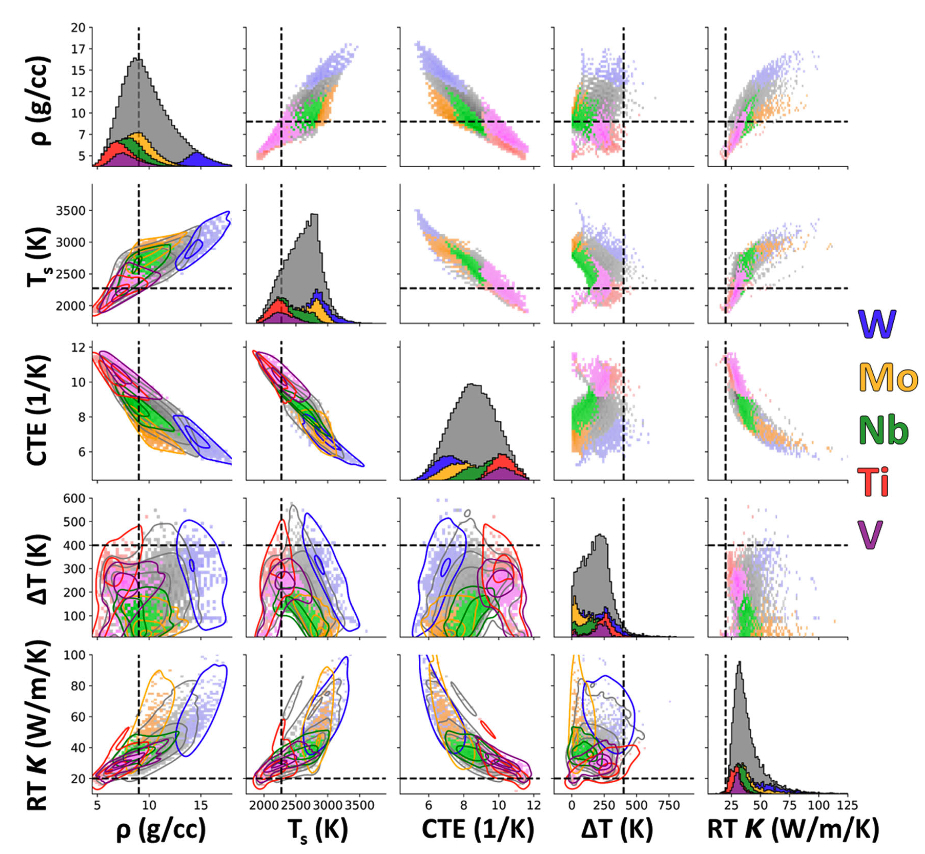The design of alloys for use in gas turbine engine blades is a complex task that involves balancing multiple objectives and constraints. Candidate alloys must be ductile at room temperature and retain their yield strength at high temperatures, as well as possess low density, high thermal conductivity, narrow solidification range, high solidus temperature, and a small linear thermal expansion coefficient. Traditional Integrated Computational Materials Engineering (ICME) methods are not sufficient for exploring combinatorially-vast alloy design spaces, optimizing for multiple objectives, nor ensuring that multiple constraints are met. In this work, we propose an approach for solving a constrained multi-objective materials design problem over a large composition space, specifically focusing on the Mo-Nb-Ti-V-W system as a representative Multi-Principal Element Alloy (MPEA) for potential use in next-generation gas turbine blades. Our approach is able to learn and adapt to unknown constraints in the design space, making decisions about the best course of action at each stage of the process. As a result, we identify 21 Pareto-optimal alloys that satisfy all constraints. Our proposed framework is significantly more efficient and faster than a brute force approach.

Pairwise plot demonstrating correlations and trade-offs between the 5 constraints applied to the design space. Alloys that are comprised of more than 50% of a particular element are colored accordingly. Alloys that do not have a majority element are colored in gray. Diagonal rows depict property distributions for each class of alloy. The lower-left triangle depicts Kernel Density Estimate (KDE) estimates over joint property distributions to better visualize the structure of the data.
